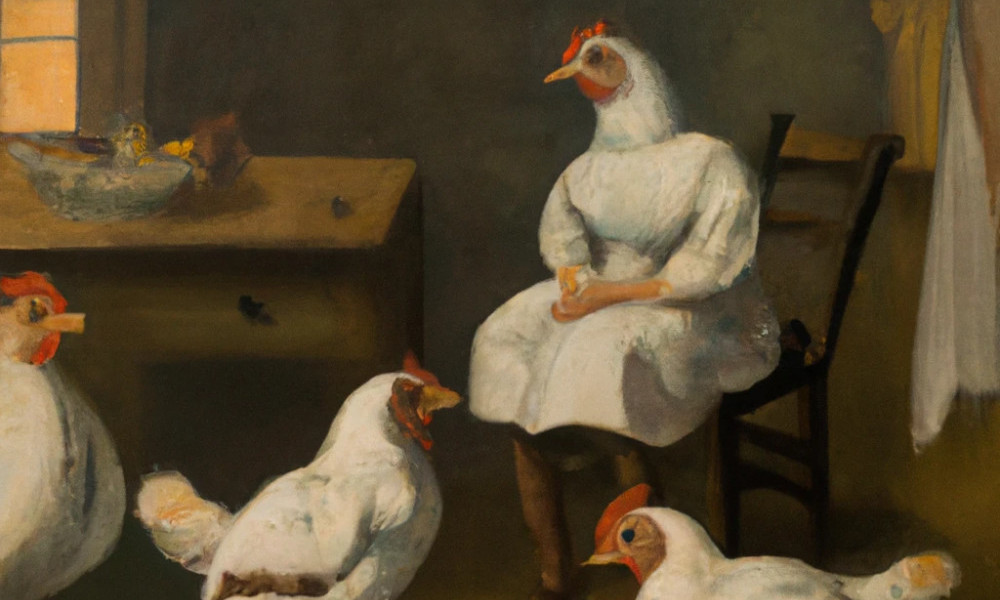There are few things that make your skin crawl more than the thought of lice. There are many types of lice and the ones we are going to discuss are the chicken-infecting kind. Don’t worry. If your chickens get lice, you are not going get them on you. Chicken lice like chickens, not people. That’s why they’re called chicken lice. You see? All kidding aside, chicken lice treatment isn’t hard at all. It just takes time and care.
What are Chicken Lice?
Chicken lice are small bugs that live on chickens and other animals. They can be anywhere from a millimeter to a quarter of an inch in length. Their color is typically buff, and they have elongated bodies like a grain of rice. They feed off a chicken’s blood, dead skin, and shaft debris on the outside of a birds bodies. Imagine fleas on dogs and you get the picture except they tend to hang out around the chickens’ vent area.
Lice live outdoors and get on any carrier they can opportunistically hitch a ride on like wild birds, ground dwelling critters, other poultry raisers, etc. You might find it odd that bugs can get on a chicken since chickens eat bugs, but these little guys are quick and small, hiding under feathers with excellent camouflage. But they are treatable.
Signs and Symptoms
Your chickens should be lively, upright, alert, and happy. If you notice that they are droopy, fatigued, distant, and unhappy, they could have lice. Here are some other signs:
- PALE COMBS AND WATTLES – These should be brightly colored. They serve to help regulate a chicken’s body temperature and need to be kept in good shape. Anemia could be the cause of the pale organs.
- SCRATCHING/EXCESS PREENING – Lice are not the only reason that chickens scratch and preen, but it could be a sign.
- DROP IN EGG PRODUCTION – Again, there are other reasons for this like age, molting, other disease.
- POOR POSTURE/DROOPY WINGS/FATIGUE – Just like we do, chickens tend to slump and droop when they are not feeling well.
- VISIBLE LICE – Since they vary in size, some are easier to spot than others. Look around the vent area if you suspect a problem, especially if the vent is persistently dirty-looking. Look for egg clusters as well.
- RAW SKIN – Roosters are brutal in their love-making practices. They bite, grab, and pull feathers. Some hens can lose enough feathers to make you think it could be lice. Close inspection will reveal the facts.
- FEATHER LOSS – Excessive feeding at the feather shaft can cause them to fall out.
Chicken Lice Prevention
Chickens want to be clean and healthy. Ironically, one of the ways that they do this is by self-medicating in a dust bath. You probably hate it when they dig little dust bowls in your yard, but they know what they are doing. The baths help keep them cool in the summer as well as helping to prevent lice infestation. If that doesn’t work…
Before you add any new birds to your flock, quarantine the newbies for a while to monitor their behavior. If they seem like they are good to go, let them mingle. If they are exhibiting any of the symptoms above, you’ll need to treat them before introductions can be made.
Keep a close eye on your flock. You see them every day, so it will be easy to tell if something is amiss. Pick up a bird once in a while to say hello and inspect them at the same time without letting them know it. Chickens have feelings too, ya know. If you see any lice, treat right away. Out of hand infestations are a real pain, and can be lethal if left unchecked, so the sooner treated the better. Of course, these birds are all sleeping in the same bed, so all will have to be treated.
Keep your coop clean. Don’t let the manure pile up. I have implemented a program of laying down a couple inches of bedding. After a couple of weeks, I’ll sprinkle diatomaceous earth over the top and add another inch of bedding. I’ll do this for 4 applications before I do a complete coop cleaning. It seems to be working for my flock of 14. Keep equipment clean as well.
Treatment For Chicken Lice
I’m going to mention a couple of treatments that you can use at home.
You can build a diatomaceous dust bath. You’ll need a container like a kiddie pool. It doesn’t have to be a kiddie pool. Use your imagination.
Fill the “pool” with sand to at least 4 inches. Add in half of a bag of diatomaceous earth and mix it in a little so that it doesn’t blow away. You’re done! How’s that for easy? Your chickens will love it and self medicate at the same time. Don’t get rid of this after treatment. It can be an integral part of your ongoing prevention plan.
The next treatment is a chemical. Whoa, whoa, whoa, don’t worry… It’s a natural chemical called pyrethrum. It comes from the flower tops of a couple of daisy-like plants, it is a natural insecticide. Just make sure you follow directions for proper use because too much can have side effects.
You’ll want to do a thorough cleaning of your chicken coop, and all associated equipment. Remove all bedding from the floor and nesting boxes. Spray the coop in every nook and cranny. Let it air out completely while keeping your chickens away. Wash all feeders, waterers, shovels, scoops, and so on with soap and water where possible.
Final Thoughts on Chicken Lice Treatment and Prevention
Chicken lice are found all over in the great outdoors, so having them is nothing new. They are a nuisance, and can even be lethal unless prevented and treated. Sources of infestation can come from many hosts, including on a fellow chicken enthusiasts’ boots. Treatments can be done at home and need not be expensive. Keep coops and equipment clean and you should be virtually lice-free and your chickens will be healthy and happy.
I really appreciate that you’ve read my article. By all means leave me a comment below if you have any questions, or just want to say hello. All the best to you.
Dave
Chickenmethod.com



Yes, chickens, along with all birds are very good at keeping themselves clean. They spend a tremendous amount of time each day preening their feathers. I am sure they hate having lice as much as we do. I never knew that dust bathes also helped to keep them clean, but I am a parrot owner and they don’t do the same as chickens. I don’t think this remedy would work on my birds if they ever got lice, but it was interesting to read how it is done in the chicken world. I love the idea that they can enjoy a tumble in the remedy and get rid of lice.
Thanks Michel! My understanding is that parrots clean themselves primarily by preening. I’ve seen some horrendous photos of severe lice infestation in chickens. It looks really painful. I’ve not had lice to the point that it was a problem, but several years ago I had a pretty large mite breakout. Following the practice described in my post took care of the mites right away. My hens were very grateful. Haha – “a tumble in the remedy” is a great mental image and exactly what they do. Thanks again, and say hello to your parrot for me. -Dave